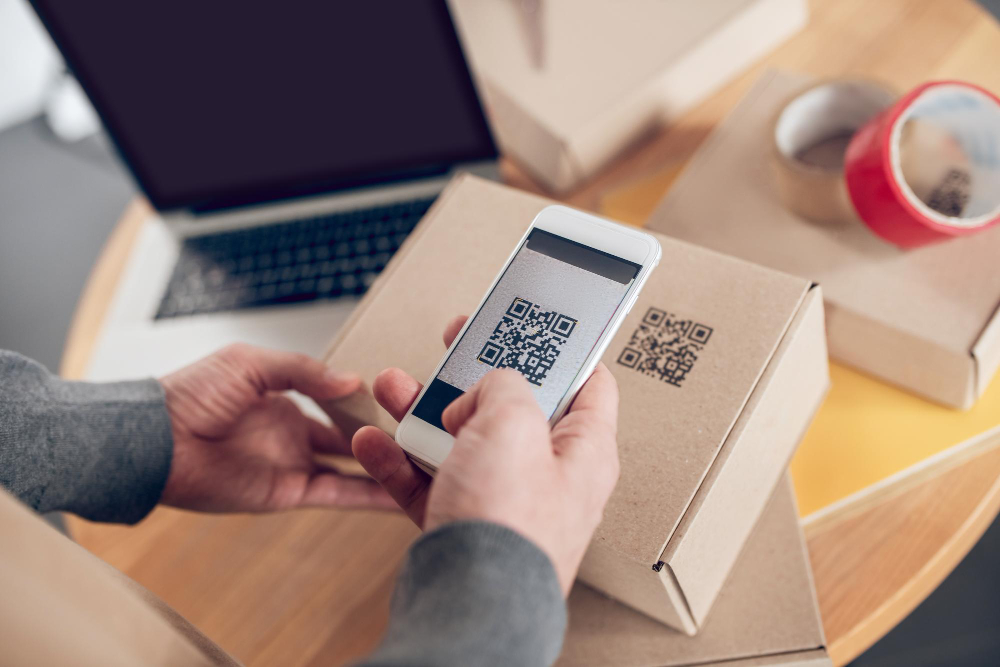Why Monitoring Remote Employees Is Essential?
Remote work has become the norm for many businesses, but managing a team outside a traditional office comes with challenges. Without direct oversight, tracking work hours, productivity, and engagement can be difficult. This is where employee monitoring software and time tracking tools help companies manage remote teams effectively.
Challenges of Managing a Remote Workforce
- Lack of Visibility: Employers can’t see when employees start or finish work, making it harder to track work hours and productivity.
- Time Management Issues: Without proper tracking software, employees may struggle to manage tasks efficiently, leading to missed deadlines.
- Employee Engagement: Remote workers may feel disconnected, affecting motivation and overall engagement.
- Security Risks: Companies must ensure that sensitive business information remains protected while employees work from home.
- Accountability: Without activity monitoring tools, it’s challenging to measure employee performance and ensure tasks are completed on time.
What are the Benefits of Effective Employee Monitoring?
- Increased Productivity: Tracking software helps employees stay on task by providing clear work hour records and performance insights.
- Improved Workforce Management: Companies can allocate resources more efficiently by monitoring time spent on projects and adjusting workloads.
- Better Employee Engagement: When employees know their work is tracked, they are more likely to stay focused and engaged.
- Accurate Payroll & Billing: Time tracking software ensures correct payroll calculations based on actual work hours, reducing errors.
- Data-Driven Insights: Reports from monitoring tools help businesses optimize workflows and improve decision-making.
Get started with QRStuff
Ready to discover how QR codes can transform your business?
Start by creating your custom QR Code today.
What Are Attendance QR Codes and How Do They Work?
Attendance QR codes provide a simple and efficient way to track employee work hours, especially for remote teams. Instead of using traditional time tracking software or manual log-ins, employees scan a QR code to check in and out of work. This method ensures accurate records of working hours while reducing administrative overhead.
Understanding QR Code-Based Attendance Systems
- QR Code Generation: Each employee is assigned a unique QR code linked to their profile in the company’s tracking software.
- Check-In and Check-Out: Employees scan the QR code using their mobile devices or company-provided tools to log their work hours.
- Data Storage and Reports: The system records every scan, providing real-time attendance data and reports for workforce management.
- Integration with Monitoring Tools: These systems can sync with employee monitoring software, offering insights into productivity and project progress.
Advantages of Using Attendance QR Codes for Remote Work
- Accurate Time Tracking – Eliminates manual errors and ensures precise work hour records.
- Easy to Use – Employees only need a mobile device to scan the code, making it a hassle-free solution.
- Cost-Effective – No need for expensive biometric systems or additional hardware.
- Enhanced Security – Ensures only authorized employees can check in, reducing the risk of fraudulent log-ins.
- Seamless Integration – Works alongside project management and activity monitoring tools to provide a complete remote work tracking solution.
How to Set Up an Attendance QR Code System for Remote Employees
Setting up an attendance QR code system helps businesses track remote work hours efficiently. By following these steps, companies can ensure accurate attendance monitoring without complex software or manual tracking.
Step 1: Create a Dedicated Attendance Form With QRStuff
To begin, businesses need a central attendance tracking system. QRStuff allows companies to generate QR codes linked to an online attendance form. This form collects essential data such as employee name, work start time, and check-out time.
Step 2: Create Unique QR Codes For Employee For Attendance Tracking
Each remote worker should receive a unique QR code that is tied to their attendance record. Using QRStuff’s QR code generator, businesses can create and assign individual codes to employees. These codes ensure that every scan is linked to the correct employee, preventing attendance fraud and simplifying workforce management.
Step 3: Distribute QR Codes
Once the QR codes are created, they need to be shared with employees. Companies can send them via email, messaging platforms, or integrate them into employee portals. Some businesses also print QR codes on ID cards or workplace documents for easy access. Ensuring employees have their QR codes readily available minimizes check-in issues.
Step 4: Scanning Process
Employees scan their assigned QR codes using a smartphone, tablet, or webcam when starting and finishing work. The scan automatically logs their work hours into the attendance system. Some businesses set up verification steps, such as requiring employees to scan from a registered device or input additional details, to enhance accuracy and prevent unauthorized check-ins.
Step 5: Data Collection With Attendance Tracking Automation & Reporting
Attendance records from QR code scans are stored in a centralized database. Businesses can automate reporting by integrating QR code based attendance data with workforce management tools. This allows managers to generate reports on employee work hours, monitor remote teams in real-time, and gain insights into productivity trends. By automating data collection, companies reduce administrative tasks and improve overall efficiency.
Get started with QRStuff
Ready to discover how QR codes can transform your business?
Start by creating your custom QR Code today.
Benefits of Using QR Code Attendance for Remote Employees
Simple and Accessible for Employees
Traditional attendance tracking systems often require additional software installation or complicated log-in procedures. With QR codes, employees only need a smartphone or a computer with a camera to check in and out. This removes technical barriers and makes attendance tracking effortless. Since the system is web-based, employees don’t need to download an app, log into multiple platforms, or remember passwords – just scan and go.
Accurate Time Tracking
Manual time tracking methods, such as spreadsheets or self-reported hours, can lead to inaccuracies, time theft, or unintentional errors. QR code attendance eliminates these issues by automatically recording timestamps when employees scan their codes. This ensures work hours are logged correctly and provides managers with reliable data for payroll, productivity tracking, and performance evaluations.
Easy Data Analysis
Employee attendance data is automatically stored in a digital system, making it easy to track trends and generate reports. Businesses can view real-time attendance records, identify patterns in employee work hours, and detect irregularities such as late check-ins or extended breaks. By integrating attendance data with workforce management tools, companies gain valuable insights into productivity and can make data-driven decisions to improve efficiency.
Best Practices for Monitoring Work-from-Home Employees with QR Codes
To get the most out of QR code attendance tracking, businesses need to implement it effectively. Here are best practices to ensure accuracy, employee compliance, and data security:
Ensure Employee Compliance and Engagement
Employees are more likely to use the QR code attendance system consistently if they understand its purpose and benefits. Companies should:
- Clearly communicate expectations – Explain how the system works, why it’s being implemented, and how it benefits both employees and the company.
- Make it easy to use – Ensure that scanning the QR code is a quick, seamless process to avoid frustration.
- Encourage accountability – Reinforce the importance of accurate attendance tracking through regular check-ins or incentives for consistent use.
- Address concerns proactively – Some employees may worry about excessive monitoring. Reassure them that the system is designed to track attendance, not micromanage their work.
Combine QR Code Attendance with Productivity Tools
While QR codes help track work hours, they work best when combined with other productivity and time tracking tools. Companies can:
- Integrate QR-based attendance with project management software to track tasks and deadlines alongside work hours.
- Use employee monitoring software to assess productivity trends and ensure work is being completed efficiently.
- Leverage real-time reports to identify patterns in attendance, productivity levels, and potential workflow bottlenecks.
Maintain Data Security & Privacy
Handling employee attendance data responsibly is essential for building trust and complying with privacy regulations. To ensure security:
- Limit access to attendance records – Only authorized personnel should be able to view and manage employee work hour data.
- Encrypt stored information – Use secure storage solutions to prevent unauthorized access or data breaches.
- Be transparent about data usage – Inform employees about what data is collected, how it is used, and how long it will be stored.
- Ensure compliance with privacy laws – Adhere to data protection regulations such as GDPR or local labor laws when handling employee records.
What Are the QR Code Attendance Tracking Alternatives?
While QR codes provide a simple and effective way to track remote employee attendance, businesses may also consider alternative solutions based on their specific needs. Two common alternatives include time tracking software and project management tools.
Time Tracking Software
Time tracking software helps employees log work hours digitally and often includes additional features like automated time logging, screen and activity monitoring, and payroll integration. These tools reduce manual entry errors, provide insights into work habits, and ensure accurate compensation. Businesses can also analyze productivity trends and optimize workload distribution. Popular options like Toggl, Clockify, and Hubstaff offer detailed reporting but may require more active management compared to QR-based attendance tracking.
Project Management Tools
Project management tools help businesses track progress, deadlines, and team collaboration while indirectly supporting attendance monitoring. They allow managers to assign tasks, set deadlines, and monitor workload distribution. Some platforms, like Asana, Trello, and Monday.com, also include built-in time tracking or integrate with tracking tools. While these platforms don’t replace attendance systems, they provide a structured way to oversee remote work and ensure accountability.
Choosing the right solution
Businesses should consider their specific needs when selecting an attendance tracking method. QR codes are a simple, cost-effective solution, while time tracking software provides detailed analytics, and project management tools help organize workflow. Some companies may benefit from combining multiple solutions to enhance workforce management and employee productivity.
Frequently Asked Questions on Employee Monitoring and Attendance QR Codes
Can I Use QR Code to Track Attendance?
Yes. QR codes provide a simple and efficient way to track employee attendance, especially for remote teams. Employees scan a unique QR code when they start and finish work, and the system logs their check-ins and check-outs automatically. This method reduces manual errors, prevents fraudulent logins, and integrates seamlessly with workforce management tools.
How do I Use a QR Code for Employee Management System?
A QR code-based employee management system works by linking QR code scans to an attendance database. Companies generate and assign unique QR codes to employees, who then scan them to register their work hours. The scanned data is recorded in real-time, allowing businesses to track attendance, monitor remote teams, and generate reports for payroll and productivity analysis.
How to Create a QR Code to Record Attendance?
- Generate a QR Code: Use QRStuff’s QR code generator to create a unique code for each employee or a central attendance form.
- Link the QR Code to an Attendance System: Connect the QR code to a database, online form, or time tracking software that logs employee check-ins and check-outs.
- Distribute the QR Code: Share QR codes with employees via email, company portals, or printed materials.
- Start Tracking Attendance: Employees scan the QR code with their smartphones or company devices when they start and finish work.
- Analyze Attendance Data: The collected data can be used for reporting, payroll processing, and workforce management.
How Do You Monitor Employee Attendance?
There are multiple ways to monitor employee attendance, including:
- QR Code Attendance Systems – Employees scan QR codes to log work hours, offering a simple and cost-effective solution.
- Project Management Tools – Platforms like Asana or Trello track task completion and workload distribution.
Ready to Get Started With Employees Working From Home Attendance QR Codes?
Discover our pricing plans or reach out to us to discover how we can help you build your attendance system for employees working from home.






Hilla Rosenberg,
Content Writer at QRStuff
Hilla is a seasoned content writer at QRStuff, passionate about making tech accessible and engaging. With a knack for breaking down complex topics, she helps businesses and individuals make the most of QR Code technology.